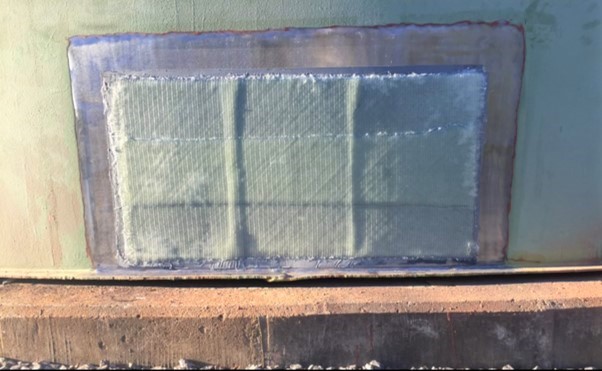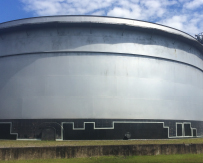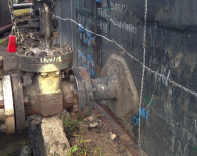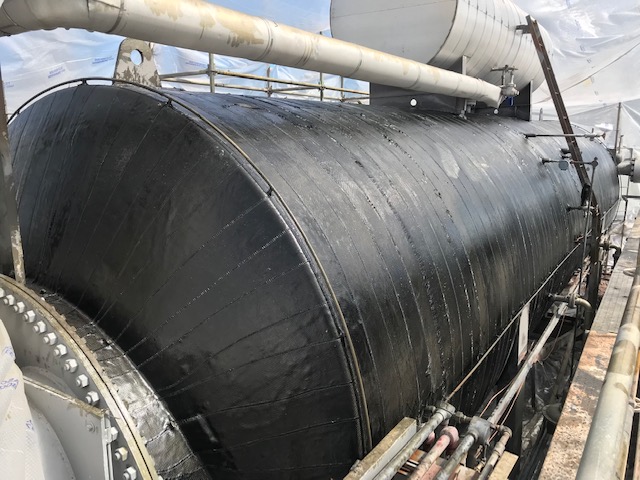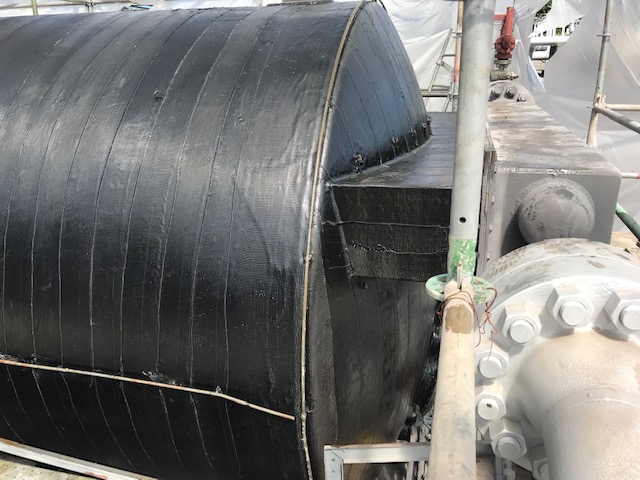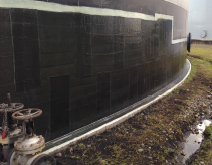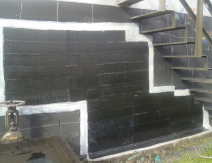*** TANK STANDARD UPDATE (API 653) ***
As of June 2020, the API 653 standard now includes allowances for the use of composite repair patches on the shell of a tank. Specifically, Section 9.4 refers to repairs using nonmetallic materials. This section primarily states that the ASME PCC-2 Article 4.1 should be used in conjunction with Annex J within the API 653 for specific requirements in terms of composite patch repairs on tank shells. With this new addition in the standard, composite repairs can now be used to repair floating roofs and the shell itself on any tanks within facilities who use the API 653 as part of their internal operating procedures. Globally, these types of repairs have been performed for over a decade now with great success giving composite repair design engineers a lot of experience and composites themselves a sturdy history. The unique aspect of composite repairs still lay fundamentally in their flexible nature in both design capacity and installation accessibility. Whether on boats, planes, pipes or tanks, composite repairs can protect and cover your assets.
Can composite repairs be installed on storage tanks to remediate defects?
Traditionally, composite repairs in the Energy industry have been used on repairing round, pressure containing pipes with high degrees of success. As this repair method grows in acceptance and use world-wide, the question has turned toward using them in the repair of tanks. In this article, we will take a step back and examine composite repair patches and their role on addressing large storage tank repairs with a focus on their acceptance and generalized repair methodologies. Historically, composite repairs have been used on flat surfaces to repair damages on boats, aircraft, and other structures, so the thought process to use them on tanks makes good sense. The primary advantage of composite patch repairs has always been the ability to fit-to-shape and provide designed, directional reinforcement through adhesion rather than riveting or welding. This allows minimal material for maximum, directional reinforcement eliminating excess weight and minimizing any undesired stiffness, as well as eliminating the need to alter the substrate material. The same benefits apply to composites now being wrapped around transmission pipelines and process piping around the world and, within the O&G industry, this has turned into the normal approach. Within the last few years, studies and testing have been completed to review the effectiveness of a composite patch versus a full circumferential wrap. One such program was conducted by the University of Tulsa, through a state grant and with the support of PHMSA, that focused the program on the effectiveness of a composite patch repair and scalability to much larger scale usage. Results showed great possibilities for composites and the ability to withstand some very aggressive pressure and cyclic conditions on through-wall defects. This can be directly correlated to how the composite is expected to perform and function on a tank wall. So back to our opening question, can composites be used on tanks? Yes, they absolutely can.
Floating roof tank repair
Composite repair applications on large tank structures can be broken into two general categories: either on a flat surface, such as a roof, or a slightly curved tank shell. When applied to a flat surface, the primary stress load is no longer hoop stress containment but either flexural loading or leaking pressure containment. The composite repair standards typically used, ASME PCC-2 or the ISO 24817, address leak repairs and provide relevant design equations with the built-in assumption that the surface is relatively flat. In this regard, there is no need to change or modify the existing equations or design methodology beyond determining a minimum size for the patch. The ISO 24817 standard does provide guidance on that. Currently, the API 653 standard, section 9.13, allows defects on floating roof tanks to be repaired by any means which have been deemed acceptable and to date, hundreds, if not thousands, of composite patch repairs have been successfully utilized in addressing leaks on floating roof tanks.

The other concern for flat surface repairs is maintaining structural integrity under external weight loads, such as ensuring the safety of a person walking across the roof. This subject is not discussed in the design standards but can be solved for using relatively simple engineering design approaches. A composite repair can be installed in such a way that it ties in “good surface” and bridges any defect area. Once cured, the composite system acts as a flat-plate beam with any flexural loads creating tension and compression which is readily addressed by the composite. Design limits can be set in terms of
allowable displacement or stress/strain design criteria. In many cases, a very conservative approach is taken by assuming the defected roof area is much larger than reality or significantly deeper resulting in thicker repairs.
Tank shell repairs
When installing a composite repair on the shell of a tank, a different set of criteria must be considered. Here, the primary focus once again leans on hoop stress reinforcement and leak pressure containment. If the vertical weight or structural stability is a concern, composite repairs are typically not recommended as they do not provide significant reinforcement in buckling scenarios and can quickly lead to an impractical thickness requirement. Having already addressed leak concerns, the capability of hoop stress reinforcement still needs to be examined. In this area, relevant testing has been conducted and presented to the ASME PCC-2 committee for future inclusion that show that a composite patch and a composite full encirclement sleeve both provide significant reinforcement (e.g., the study and testing completed by the University of Tulsa previously mentioned). The primary difference is that the patch only provides local reinforcement reducing the strain under the composite significantly more than the rest of the pipe or vessel. Future editions of the ASME PCC-2 are currently being written to include more detailed uses of composite repairs in the form of patches.
For more information on how composite repairs, backed with strong engineering, can help remediate tank defects, please contact sales@cs-nri.com.


Composite Repair Options for Tanks
In this TEC talk Casey Whalen, CSNRI's Global Engineering Manager, discusses the application of composite repairs on tanks and other large vessels. Don’t miss your chance to learn about the basic design principles, review potential applications, and discuss real world case studies of composite repairs.

Composite Repair for Tanks: An Update from API 653
This TEC talk reviews the special design and practical needs of repairing tanks with composite materials, as well as give an update on the addendum to the API 653 standard released in June, 2020. Design and installation considerations will be reviewed as well as relevant industry case studies on successful usage.

PennsylvaniaPIPE DETAILSA 10-foot (3-m) high, 35-ft (10.7-m) long glycol salt bath heater suffered from corrosion under insulation (CUI)80% wall loss in multiple areas300°F (149°C) Operating TemperatureSummaryA 10-foot (3-m) high, 35-ft (10.7 m) long carbond steel bath heater suffered from CUI2 layers of DiamondWrap MT carbon fiber were applied over the entire unit3 technicians completed the…
South KoreaPipe DetailsLeaking ammonia tankCracks from 1 mm to 5 mm (0.04 – 0.2 inch) on multiple girth welds80°C (176°F) Operating TemperatureSummary An inspection at a tank farm in Korea revealed that the roof of a tank holding ammonia was unsafe. Multiple cracks ranging in size from 1 mm to 5 mm (0.04 – 0.2…



